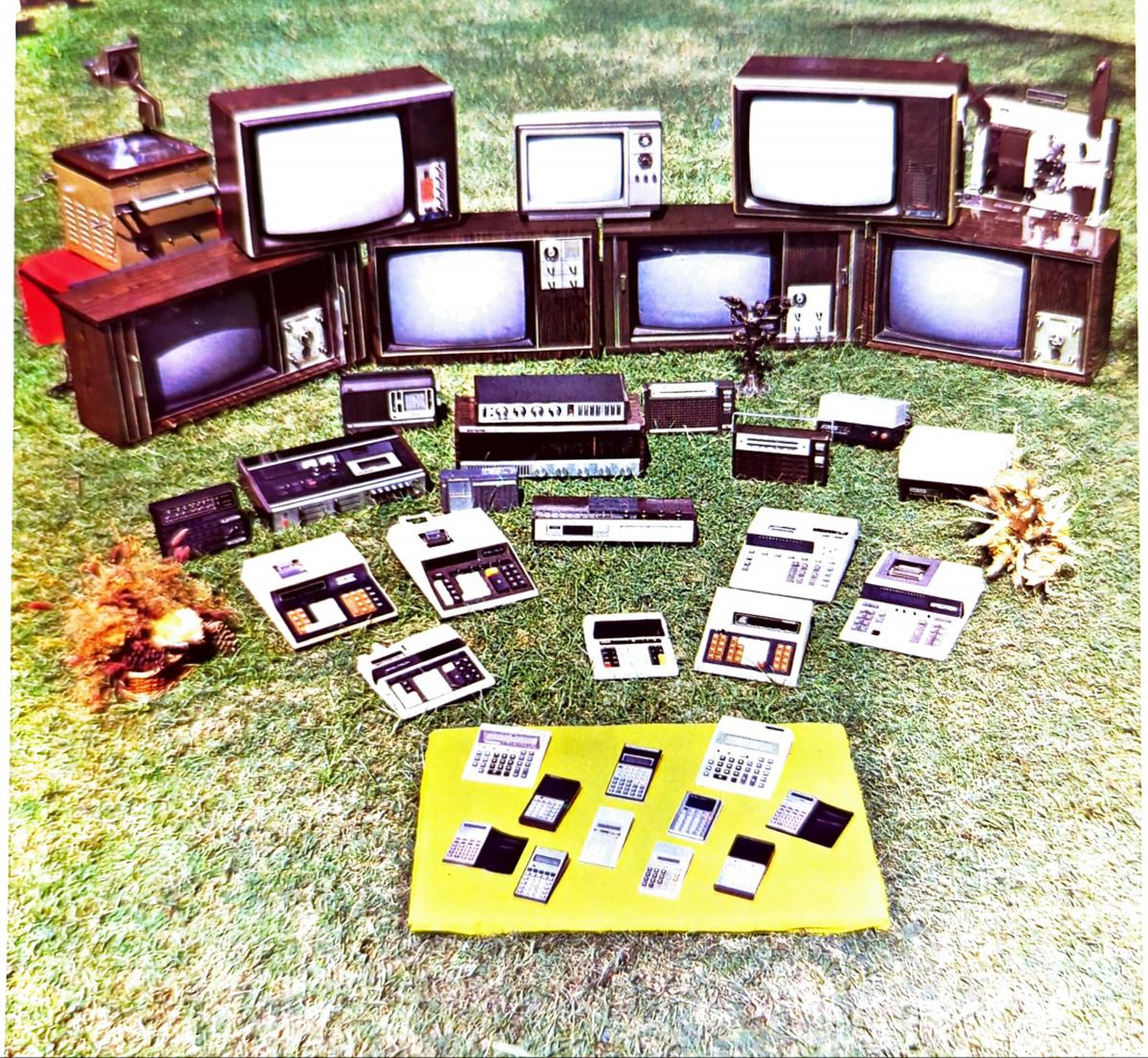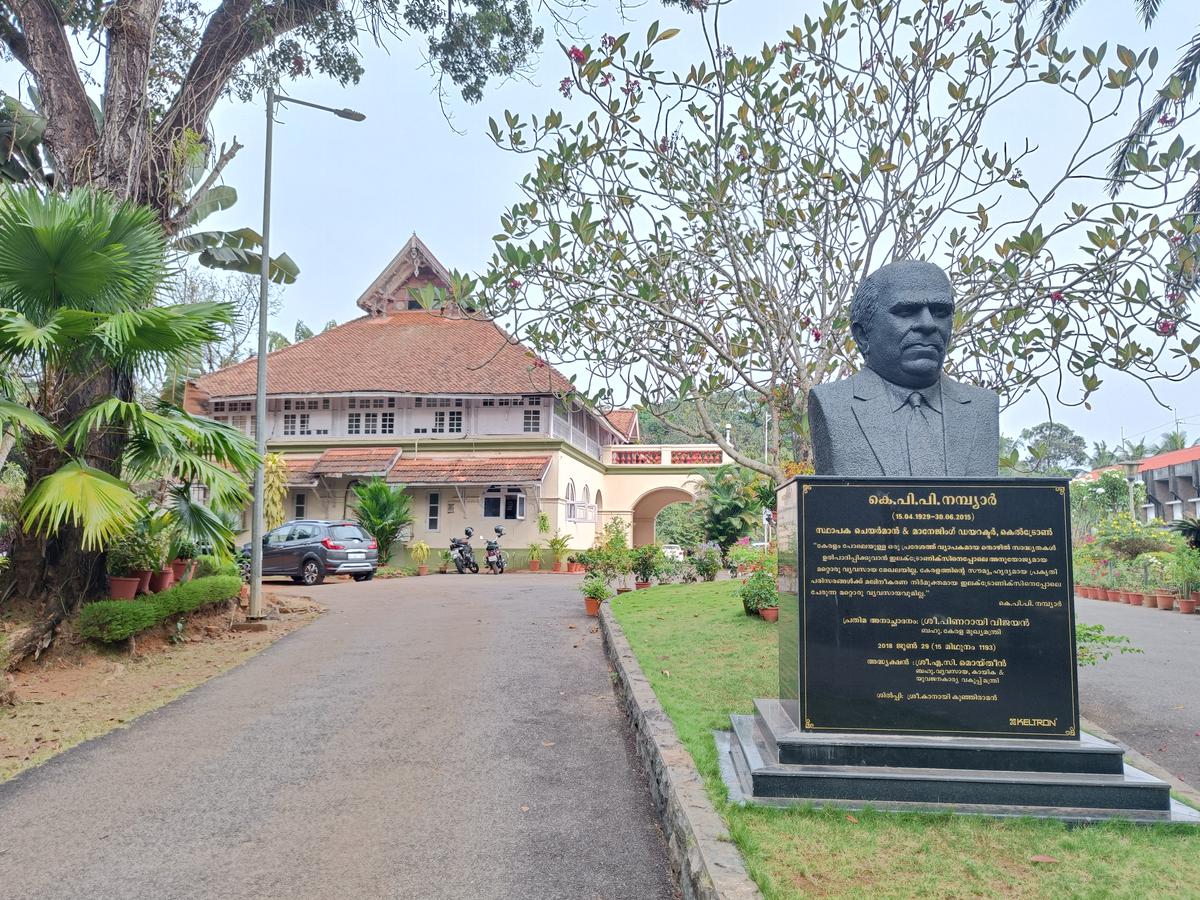At 50, Kerala’s Keltron seeks to recapture its old glory through diversification
January 18, 2023 10:21 pm | Updated January 19, 2023 05:09 pm IST – THIRUVANANTHAPURAM

A person watching a programme in a Keltron black and white television in the early 1980s
In mid-1973, a small rented house at Peroorkada in Thiruvananthapuram witnessed the baby steps of what would over the next decade pave the way for Kerala to make its mark in the electronics sector – the formation of Kerala State Electronics Development Corporation Limited (Keltron).
Early years

K.P.P. Nambiar, Chairman and Managing Director of Keltron presented a Clock Radio manufactured by a women’s Co-operative to the President of India, Giani Zail Singh in the presence of the Kerala Industries Minister E. Ahmed, on September 12, 1982, at Rajbhavan
| Photo Credit:
THE HINDU ARCHIVES
K.P.P. Nambiar, a technocrat with a stellar record, was chosen by the State government to helm the fledgling public sector unit. The first contract came soon, from the Electronic Corporation of India Limited to manufacture 5000 black and white television sets.
A year later, in what would be a key milestone in its initial growth, the Electronics Research and Development Centre (ER & DC) was set up.
“Because of his experience and contacts in the industry, Mr. Nambiar could bring in so many collaborations in the initial years, including a collaboration with Belgium-based Sprague Electromag for the manufacture of Aluminium Electrolytics Capacitors, with Controle Bailey of France for the manufacture of control instrumentation and panels for thermal power plants and industries. He set up a strong R&D team here, through which many new products were introduced, giving the company a pan-India presence. Ahead of the Asian Games, the then Prime Minister India Gandhi asked him whether the company can produce colour televisions, which were later marketed under the Keltron brand,” N. Narayanamoorthy, the current Chairman and Managing Director of Keltron tells The Hindu, ahead of the company’s 50th anniversary celebrations.
Another of his key initiatives was the starting of women’s co-operative societies to assemble radios. The company manufactured radios, calculators, watches and a host of other products, making Keltron a household name. Even before Doordarshan started transmitting, the company telecast films from VHS tapes using a Russian satellite in Thiruvananthapuram city on an experimental basis.

Keltron’s array of products in the 1980s
Fall and rise
The departure of Mr. Nambiar, after he was appointed as the secretary of the Union Government’s Department of Electronics (DoE) in 1986, set off a chain of events that would lead to the company’s weakening. The ER&DC was de-linked from Keltron and attached to the (DoE), literally halting R&D at the company. In the post-liberalisation era, marked by the entry of multinational corporations and fast technological changes, Keltron failed to catchup with the competition with respect to upgrading technology and human skills. Several subsidiary companies, including those for manufacturing projectors, rectifiers and diodes, were closed down. Keltron continued to be in a sorry state well into the 2000s.
However, improvements began to be visible from mid-2000s onwards, with the company concentrating on its core competencies, including power electronics and traffic management systems. Venturing into the naval defence sector, it has collaborated with the Naval Physical and Oceanographic Laboratory (NPOL) for the manufacturing of various instruments and systems used in ships and submarines.
Back to profitable ways

The Keltron head office at Vellayambalam
After the highs of 1980s, the company for the past five years has been netting profits. This year, it achieved a turnover of ₹521 crore with a net profit of ₹20 crore, surpassing the previous best of ₹458 crore. Taking into account its two subsidiary companies, the Keltron group turnover was ₹614 crore. The State government is implementing a project to turn it into a ₹1,000-crore turnover company in the next two years. The company is also in the process of getting an AS9100 certification, to enable it to manufacture aircraft electronic systems.
“The government infused funds to close all the debts. Concerted attempts have been taken to diversify and strengthen our core competencies. It has identified Keltron as a focal point in enabling the creation of an electronics ecosystem in Kerala. We are currently strong in the naval defence sector with the manufacture of underwater communication systems and ecosounders, which are used in most Indian Navy ships. Growth is also expected in the traffic management systems, with the ongoing Safe Kerala project and a major project for the Kerala Police. Keltron is also providing high power systems for all nuclear power plants in India. The Kannur component complex is currently manufacturing 35% of the Aluminium electrolyte capacitors in India. In addition, we will be commissioning a new plant for the manufacture of super capacitors in May. A common electronic systems testing centre will also be set up so that small electronics companies need not incur the huge charges of testing outside the State,” says Mr. Narayanamoorthy.
For all the latest Business News Click Here
For the latest news and updates, follow us on Google News.
